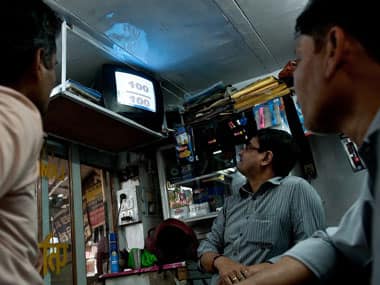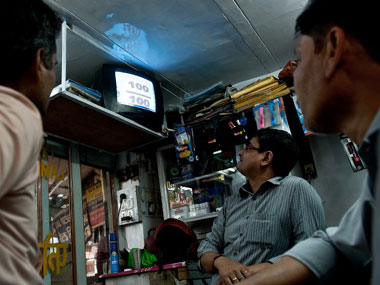Tanu Sharma, a young journalist with India TV, allegedly attempted suicide having failed to put up with the unreasonable demands being made on her by her bosses. Rahul Pandita, in an article on The Hindu, traces the rise of Hindi news television journalism and attempts to explain the ills plaguing them. He deftly traces what lured hundreds of people into the news television business from the Hindi heartland. [caption id=“attachment_1603423” align=“alignleft” width=“380”]  People watching TV in India. Representational image. AFP.[/caption] “But the newsrooms they got to reign over were different from the newsrooms of Hindi dailies. The television had suddenly become a soap opera in which the dream of liberalisation could not only be lived but prolonged as well. The young and the restless from small and big cities wanted to be in these newsrooms, to experience their multi screens and air conditioner-induced unnatural coldness. The camera offered them what an MBA could not: instant recognition from their neighbours in their middle income group colonies. Or, if you made it bigger, a stranger could come forward in a marketplace and shake your hand. It was all exhilarating,” he writes. He then goes on to point out how the ‘sansani khez’ news diggers work with a deep disregard for other aspects of journalism or even life, leading to widespread misogyny and frustration in the newsroom at times. He finally ends the article by commenting on how the people who run these newsrooms are managers first and journalists later. “Around this time, journalist-editors began to be replaced by manager-editors. A notion was floated that news judgement is no big deal and that anyone could do it. These managers, drunk on power and money, turned news into folderol,” he writes. Now what does that say about the consumers of news? Because after all, this particular news industry, possibly also runs on the demand-supply theory. That’s something to ponder on. Read the complete article here.
The article in The Hindu deftly traces what lured hundreds of people into the news television business from the Hindi heartland.
Advertisement
End of Article


)

)
)
)
)
)
)
)
)



